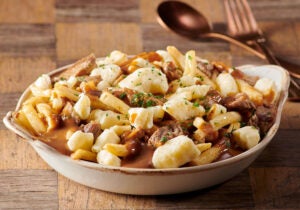The breakfast rush is on, and a restaurant line cook is upset because her child missed the school bus and needs a ride. In today’s short-staffed labor environment, if she takes off you go from “in the weeds” to “in the swamp.” What do you do?
If you’re the owner of The Garden Griddle in Paw Paw, Michigan, the answer is: “We’ve got this. Take care of what’s important.”
Treating everyone like family is part of the secret to retaining labor at the 40-seat restaurant, catering company and bakery/sweet shop. President and owner Sarah Cox wouldn’t have it any other way. It’s an approach that means labor stability for the dozen or so staff members, including seven full-time employees.
“We treat each other like family,” Cox said. “There isn’t anybody on our team who wouldn’t do anything to help the success of the business.”
The family approach comes naturally. Cox’s husband, Zach, manages the restaurant, while her mom, Janice Kimble, oversees the catering and bakery/sweet shop. She also gets help from her son, Cooper.
Family-first approach
Since reopening after a pandemic lockdown in 2020, Garden Griddle has lost just one mission-critical employee—a kitchen manager who moved away. It’s a remarkable accomplishment in an industry enduring record turnover and relentless labor shortages.
The family-first approach helps, but Cox acknowledges other factors as well. Among them are steady hours, a regular schedule, competitive wages and growth opportunities.
Garden Griddle is open five days a week, Wednesday through Sunday, from 8 a.m. to 2 p.m. While it was tough to surrender revenue from Monday and Tuesday, this schedule proved popular for everyone.
“We have a regular, full-time schedule for most of our staff, and we don’t need lots of extra part-time people, which is something we struggled with managing in the past,” Cox said. “We’ll probably never be open on Monday and Tuesday again, the profit to grief ratio isn’t worth it.”
Steady schedules pay dividends
The regular schedule allowed Cox to budget a 40-hour work week in which some staffers are salaried. The regulars earn $13 an hour, plus tip-sharing. Everyone qualifies because there’s no division of labor. From server to line cook to dishwasher, each staffer fills whatever roles are needed.
It’s a pay scale that allows Garden Griddle to compete with businesses offering $15 an hour. To give everyone a raise, Cox says she called on her Gordon Food Service Sales Representative to figure out meal costing and raise menu prices.
“In the end, we’ve shaken out with the best team we’ve ever had,” Cox said. “They can all ring up a sale, everybody can answer the phone, everybody can run food. My waitress goes in the back and assists on the line. My line people come help out front. There is no back-of-house vs. front-of-house mentality. We work for the customer.”
Creating career opportunities
Staff loyalty means employees treat Garden Griddle like a career. And why not? There are a lot of growth opportunities in a business that started out 11 years ago as Creative Catering Services, a mother-daughter catering company.
“The restaurant didn’t come about until we lost our catering kitchen,” Cox explained. “The only kitchen that was available was in a restaurant setting.”
The reluctant restaurateur hatched the idea of a breakfast and lunch restaurant using the 14-seat space that came with the kitchen. Never mind that neither she nor her mom liked breakfast food or had ever run a restaurant.
Some menu and order planning help from Gordon Food Service started them in the right direction. They’ve been at it since, moving to the current Garden Griddle location in Paw Paw a few years later when the original building was sold.
Expensive hobby to growth mode
Sometimes the restaurant felt like a very expensive hobby, Cox admitted. A weekend of catering could bring in four times the revenue of a Saturday at the restaurant. It also was stressful to run a catering operation out of the restaurant kitchen.
Then the pandemic took its toll on gatherings and the catering business. Today, the catering and restaurant business is a 50-50 split.
The real saving grace was the loyal employees. When the restaurant came back online, everyone on staff pitched in, making takeout lunches and dinners and even turning 500 pounds of chocolate into cocoa bombs, a pandemic hot chocolate Instagram favorite.
It led Cox and Kimble to open a separate catering kitchen across the street. Plans for the accompanying storefront include a bakery and confection shop called “g.g. sweets” (Garden Griddle Sweets) that will feature … you guessed it, cocoa bombs.
“I asked my people why they stay here, and they all said the same thing: Because we care about them,” Cox said. “And they work hard for us, like family.”




























